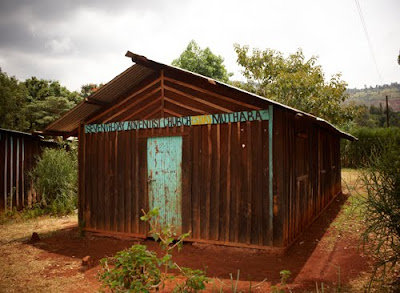
Wednesday, 23 March 2011
Tuesday, 22 March 2011
How to Sell Yourself

In the rag trade, and it's spring, chuck some flowers in the window, even if you're selling floral dresses... But what on earth are therapy culottes and therapy vests? Maybe they keep you Jung. The old ones are the best.
If you're chugging on the high street, selling charity (?), you're meant to get eye contact with your target while walking backwards. Great demonstration of eye avoidance tactics here by three pedestrians.

Wednesday, 16 March 2011
John Grimshaw's spring.
Tuesday, 8 March 2011
Would having a dog improve your quality of life?
Monday, 7 March 2011
Irina Werning


My nephew sent me the link to this photographer's site. The Argentinian photographers name is Irina Werning, and the project is titled 'back to the future'. She recreates old photographs with the original subjects with fantastic attention to detail, including location, props, and film grain.
Worth a look, it's beautifully produced.
Plants on the Equator.
It's a very strange place, where elephants have been found at 16,000 feet and a leopard at 17,000 feet. And despite being almost slap bang (scientific phrase) on the equator there's snow too, even a glacier, though not for long if you believe all that CC stuff.
I didn't see a leopard or an elephant, though not for want of trying, and a fair amount of huffing and puffing.
If you want a brilliant account of climbing this mountain, go no further than 'No picnic on Mount Kenya', the true story of three Italian POWs who escaped from their British camp in Kenya during WW2, just to climb it (and then return to their camp!). A movie was made of the book, called 'The Ascent', and if you have a copy, I'd love to borrow it.
Despite being far better equipped than the Italians (who had to make their own climbing gear) it was still hard work and pretty nippy at height. Recommended though.

Wednesday, 2 March 2011
Vivian Maier

You may have heard some of the news that's been circulating about the photography by this woman who died in 2009. She worked as a nanny in Chicago, taking photographs in the street in her spare time. Her work was unearthed by John Maloof, who came across her negatives in a suitcase in a sale. He tracked down a further hoard, including unprocessed rolls of film, and has spent the last four years organising the photographs.
Eighty photographs can be seen at the Hilaneh von Kories Gallery in Hamburg, in a show titled 'Twinkle twinkle little star'.
There are obvious visual echoes of the work of Dianne Arbus amongst others, but it's refreshing to see work of 'unknown' street photographers. Part of the appeal may be in the angle of view, using a camera where the photographer looks down into the viewfinder, resulting in photographs that are taken from below the eye level of the subject. This is seldom seen today, due in part to the use of medium format cameras with eye level viewfinders.
Street photography, to some extent, has become more difficult to practice, especially if you point a camera at people. For some reason there appears to be more resistance to being photographed in public. Heaven help you if (especially if you are male)you point your camera at a child in the street, however innocent your intention may be. People used to joke about you being from the 'tax office' but now it's almost as if photographing people in public is sinister. How nice it would be to return to the days when it was not so, but the genie seems to be so far out of the bottle that it's unlikely. Even the Met police have tried to curtail photography in some areas, as have the National Trust. Anyone who has pulled out a camera in a shopping precinct will know that it's a red rag to the little men of the peaked cap brigade.
So it's great to see these wonderful photographs from a time when street photography wasn't seen as being harmful.
Subscribe to:
Comments (Atom)























